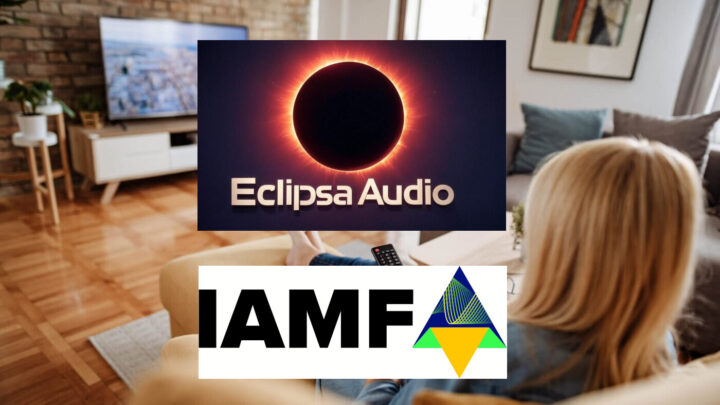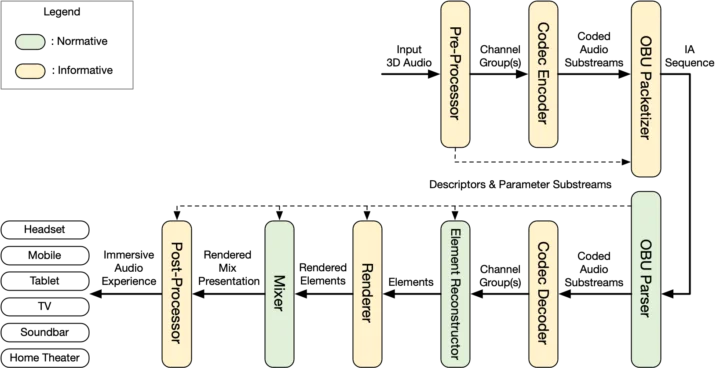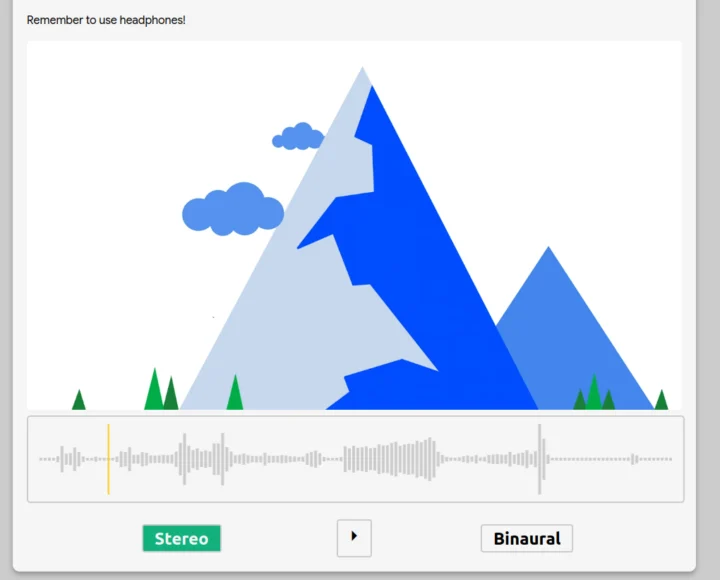Samsung announced Eclipsa Audio 3D technology, a royalty-free alternative to Dolby Audio, would be integrated into TVs and Soundbars in its 2025 lineup at CES 2025. The press release explains the 3D audio technology was developed in partnership with Google and that “Eclipsa Audio allows creators to adjust audio data such as the location and intensity of sounds, along with spatial reflections, to create an immersive three-dimensional sound experience”.
Like 90% of announcements at CES 2025, Eclipsa Audio appeared to be mostly fluff. I also noticed it was developed through the Alliance for Open Media which manages the now-widely-used AV1 video codec, but a search for Eclipsa did not return anything. Luckily the “Arm Editorial Team” saved the day with an interesting article published a couple of days ago with more information about Eclipsa Audio. So let’s have a look.

Eclipsa Audio is a multi-channel audio surround format that leverages IAMF (Immersive Audio Model and Formats) in order to create a three-dimensional soundscape that mimics the environment, so for example, you would be able to hear a helicopter coming from one side of the room and going to the other side with the audio levels dynamically adjusted as the helicopter draws near and then flies away.
While The Alliance for Open Media has nothing about Eclipsa, they have page about IAMF with links to the specification and a reference software implementation (libiamf) on GitHub currently used by the iamf-tools to help users process and work with the IAMF format, and ffmpeg is also mentioned.

An Eclipsa Audio bitstream can contain up to 28 input channels rendered to a set of output speakers or headphones, and the new standard also supports binaural rendering, a technique used to create a three-dimensional immersive sound experience when listening to audio over headphones, for mobile applications.
You don’t need Eclipsa Audio-certified hardware to test binaural rendering with IAMF as a web demo is available. Simply go to the website to try one of the two built-in demos (e.g. “Animated demo (3rd-order ambisonics + stereo)”) or load one of the .iamf files from GitHub, and connect a pair of headphones to check it out. First, listen to the Stereo audio, and then to the Binaural audio to hear the difference.
Arm also provides more details about the work they’ve done notably upstreaming patches to the opus-codec and libiamf with NEON intrinsic optimizations, performance improvements on devices like Quartz64 and Google Pixel 7 (9.1.6 output showed over 160% improvement on the Arm Cortex-A55 CPU cores in the Pixel 7), and decoding efficiency (all test files decode in less than 16% of real-time on Aarch64 and less than 23% on Arm32, making them highly efficient on the Cortex-A55). IAMFsupports LPCM, AAC, FLAC, and Opus, but the latter is the most modern codec and should become the preferred choice.
It’s unclear to me how the standard differs from Dolby as the feature set looks similar, and the main benefit will likely be the open and royalty-free nature of IAMF and Eclipsa Audio (not even sure if the two are different). There’s already plenty of Dolby hardware around, so it will probably take several years before Eclipsa Audio becomes widely adopted, except on mobile where any pair of headphones will do for IAMF binaural audio.

Jean-Luc started CNX Software in 2010 as a part-time endeavor, before quitting his job as a software engineering manager, and starting to write daily news, and reviews full time later in 2011.
Support CNX Software! Donate via cryptocurrencies, become a Patron on Patreon, or purchase goods on Amazon or Aliexpress





